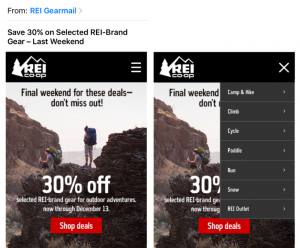It’s the end of Q1 and your Series A hasn’t landed yet. GOOD.
For many of you entrepreneurs out there, as you turned the page from 2016 to 2017, raising a series A Round may have been near or at the very top of your to do list. Heck, it might have been the only thing on your to do list. Well, here we are approaching the end of Q1. No big deposit. No Series A. Bootstrapped has become less of a mode of operations and more of a way of life.
Despite the light account balance, 2017 could still be your year.
We’ve entered the new age of raising money. Rip up the rule book. Down is up. Up is down. We’ve never seen a time like this before.
Or, maybe we have. See, despite what your average venture capitalist will confess, many aspects of the VC world are consistent over time. Some things change, but a lot of things don’t.
So, despite some of the new parts and pieces (I’m looking at you SAFE Agreement), venture capital of old and venture capital of new still share the same DNA. And when it comes to soliciting funding, one thing remains exactly the same.
They’ll never tell you NO and rarely tell you YES.
Unfortunately, today’s entrepreneur also shares a defect with its earlier kin. When the VC doesn’t say “NO,” it’s interpreted as “Probably YES.” But in the parlance of VC, “Not NO” in most cases means “Probably NEVER.” So, how should an entrepreneur navigate these choppy waters of “Not NO, Not YES, and Probably NEVER?”
Don’t count on your A Round. Ignore the possibility it’ll happen seems odd advice, but that’s exactly what I’m telling you. It goes like this:
Forget your A round. Build your business. Secure your A round.
Build a great business that doesn’t require venture capital. Then, and only then, will a “not NO” have the slightest possibility of turning into a “MAYBE.” Which after careful consideration, might just turn into “YES.”
From my experience as an investor and CEO, bootstrapper, series B recipient and everything in between, focus on these 4 things. In the past, in 2017, and probably in the future, nailing this list is exactly what translates into a fundable company.
1. Segment Then Scale
Too many young companies still try to sell their stuff to anyone with a pulse. As it turns out, that’s not repeatable, and is more expensive to do marketing and demand generation. Focusing on a segment is EXACTLY what many bootstrapped companies need more of to mature to the next level. A segment can be any group of prospects that have something in common that creates uniqueness. A segment can be a vertical market, like healthcare or retail. It can be a geography like, North America or California. It can be a size, like mid market or enterprise. And, it can be a subset of all these. Putting a target on a specific segment instead of “the world” means you can go deeper. You can dominate. So pick a segment or two. Dive in. Learn. And develop a repeatable process to dominate the next 5 segments. VC’s will see success and a repeatable process. Fundable.
2. Prospects Not Ready? Not a Problem
If you’re a startup, creating a new market, or both, you’ll likely encounter lots of tire kickers through your lead generation efforts. You’ll lose just as much to no decision as you will to competition. And guess what. That’s a GOOD thing. As long as you have a system in place to capture these tire kickers for some nurturing. Every campaign you run should have two goals. First, to identify every prospect ready to engage and buy NOW. Second, to capture as many prospects that aren’t ready to buy now, but will be in the future. Capture them in a leads database, or even a simple spreadsheet, and nurture away. They will come around. VCs will see latent demand and an approaching adoption wave. Fundable.
3. Vet Your VCs
The number one complaint from VCs is that they see too many business plans that do not fit their area of focus. No matter what space you’re in, there are a handful of VCs out there that focus on it. VCs also like to focus on different funding stages like early rounds versus later stages. So, do some research. Find the 20 or so firms that focus on your type of business. Start to develop relationships with them. Connect via Linkedin or “run into them” at an event. Follow companies they’ve funded. Stalk them. In the most harmless sense of stalking of course. These relationships and knowledge will pay off when the real funding conversations starts. VCs will see an opportunity that fits their criteria and a founder who doesn’t shoot into the breeze. Fundable.
4. No Funding, No Sweat
You will get funded exactly when you are ready, and not a moment sooner. You will get your first customer when you deserve it, when you’ve earned it, and not a moment sooner. It’s part of the process your new company has to grow through to mature. To hone your message. To build the right new features. There are no shortcuts. None. So, if you haven’t been funded yet, take a step back. Examine yourself. Own it. Where do you need to be to get there? The process is required. There is no substitute for the grind. VCs will see a honed message ready for prime time. Fundable.
Twenty Seventeen is still your year. Focus on your business first, and your seed or Series A round might be right around the corner. “YES” does occasionally happen. But, even if it doesn’t, well, GOOD. There’s still more to learn.
The real key to getting funded? Simple. Follow these steps. Be fundable.
(82)
Report Post





